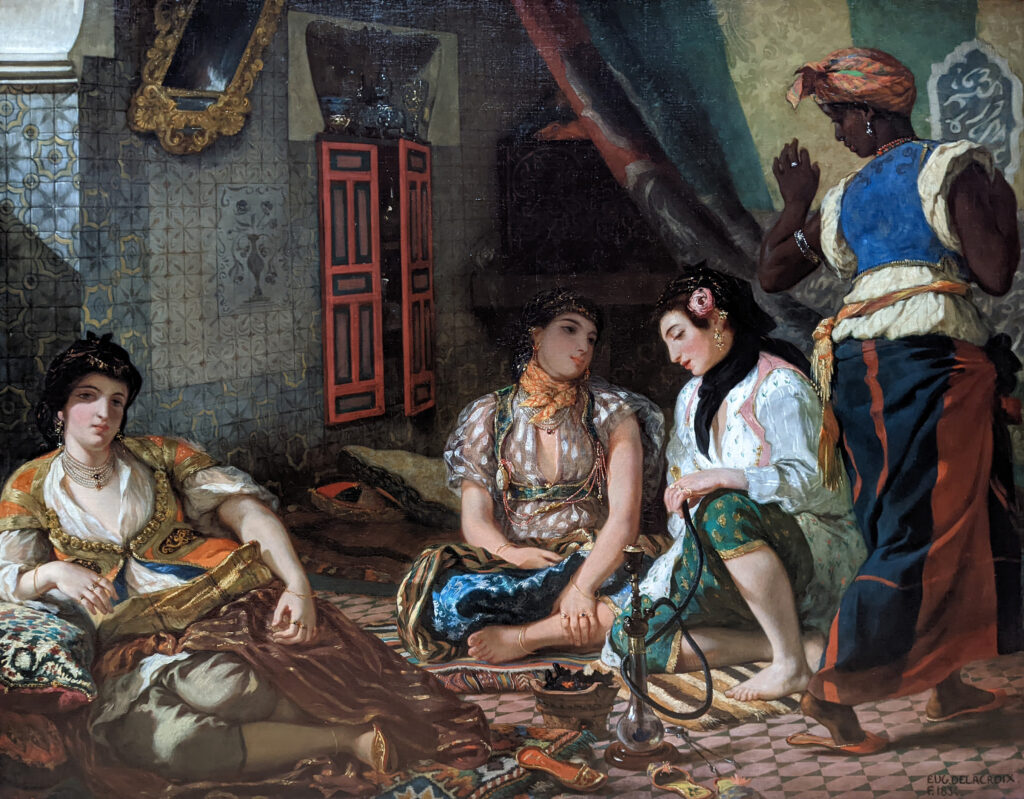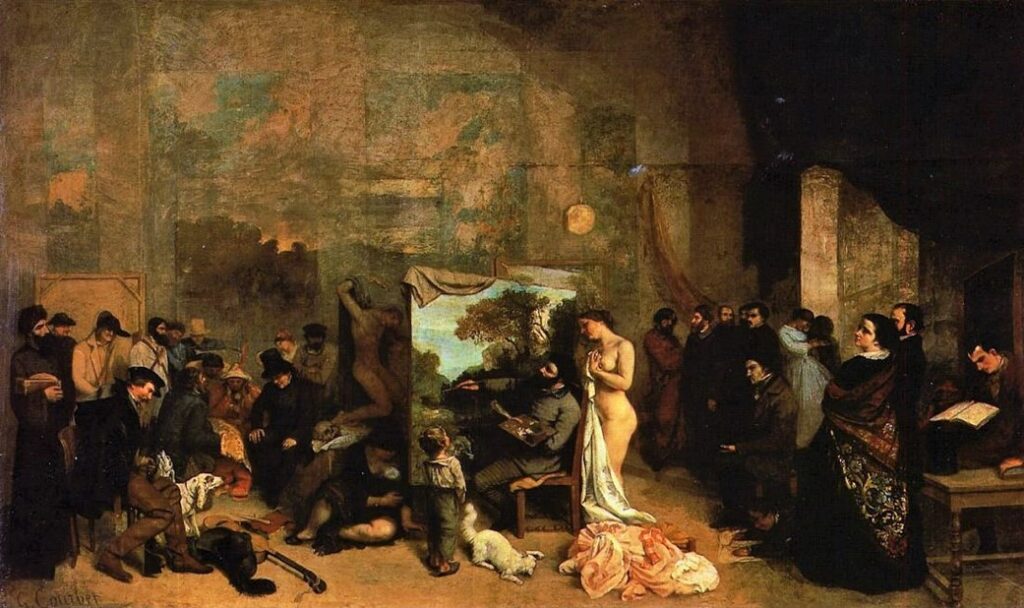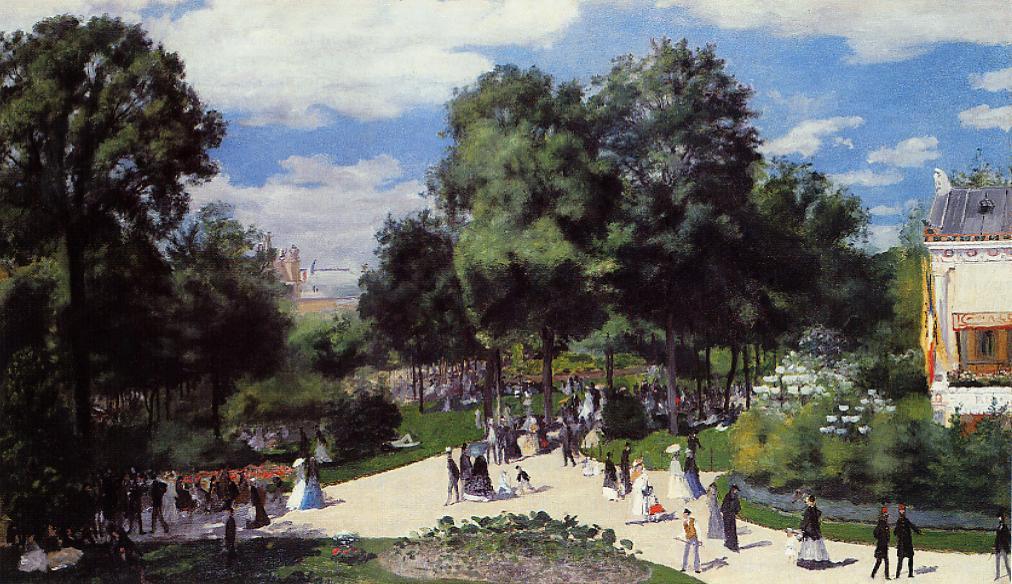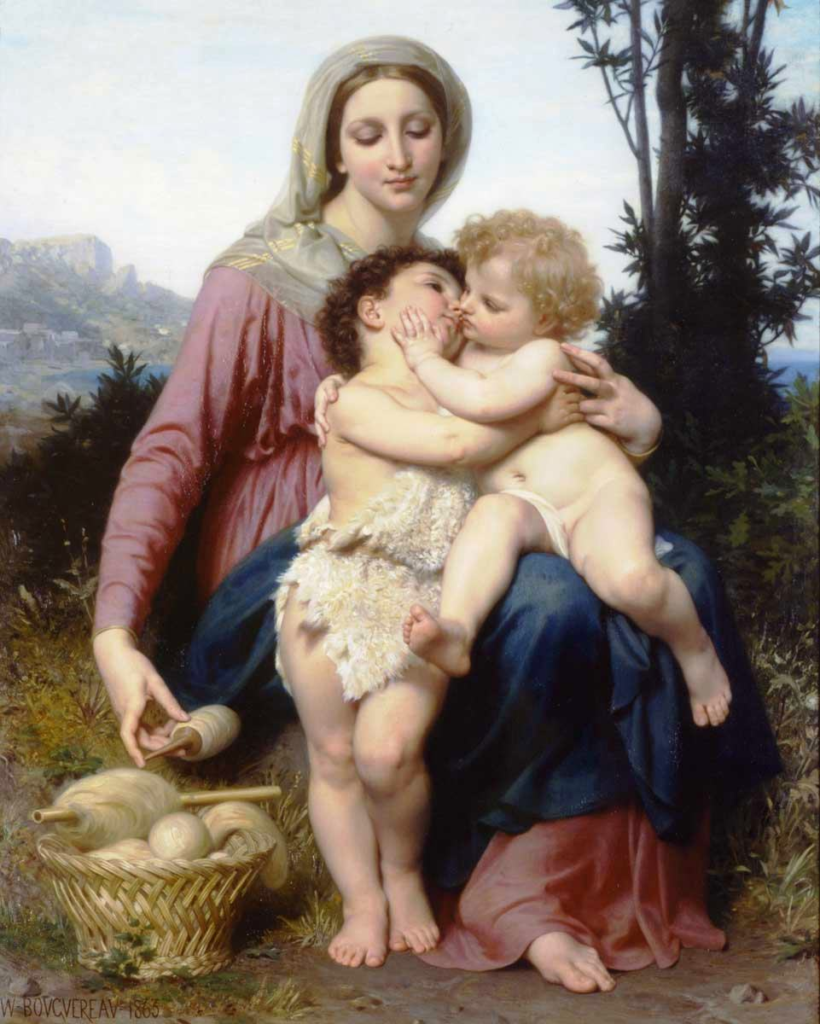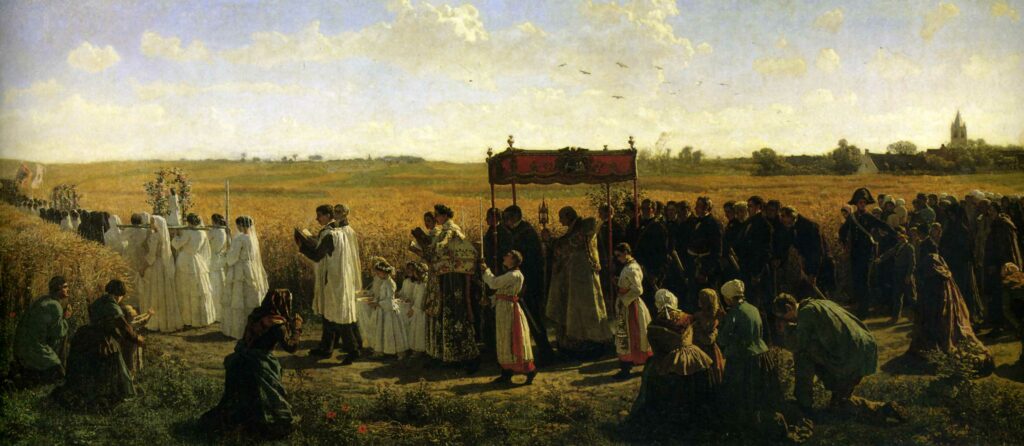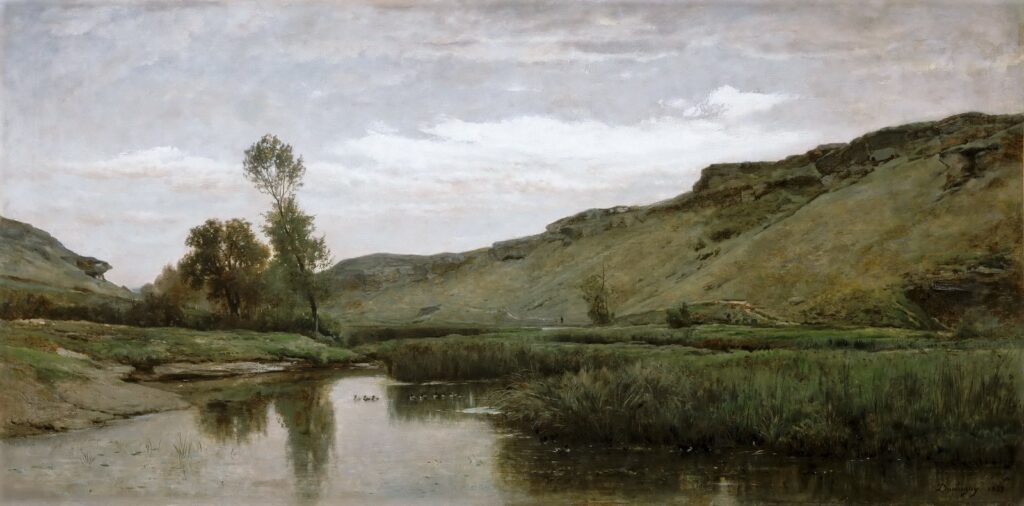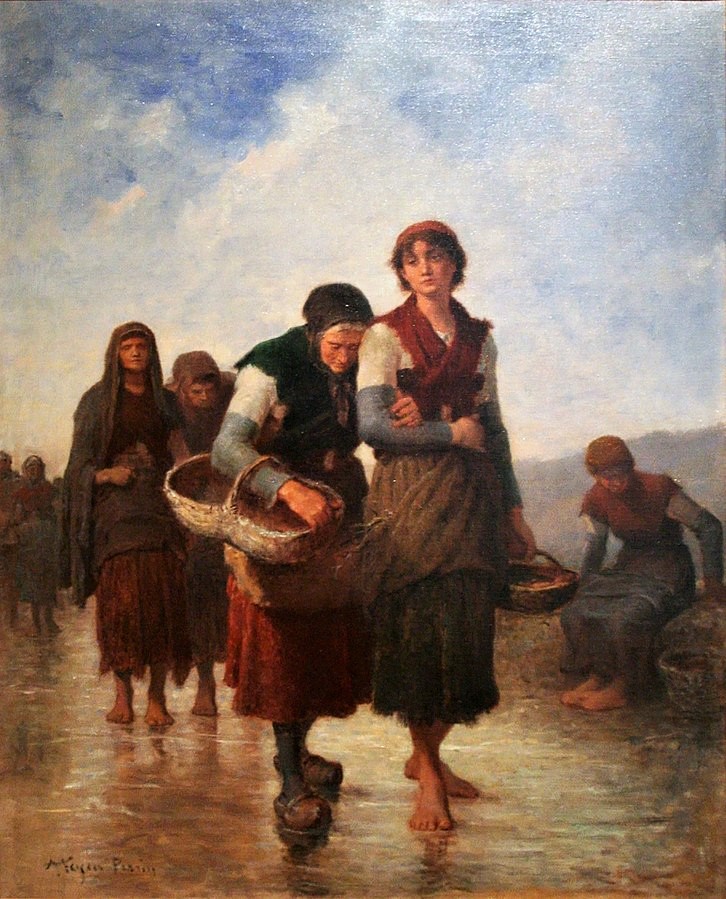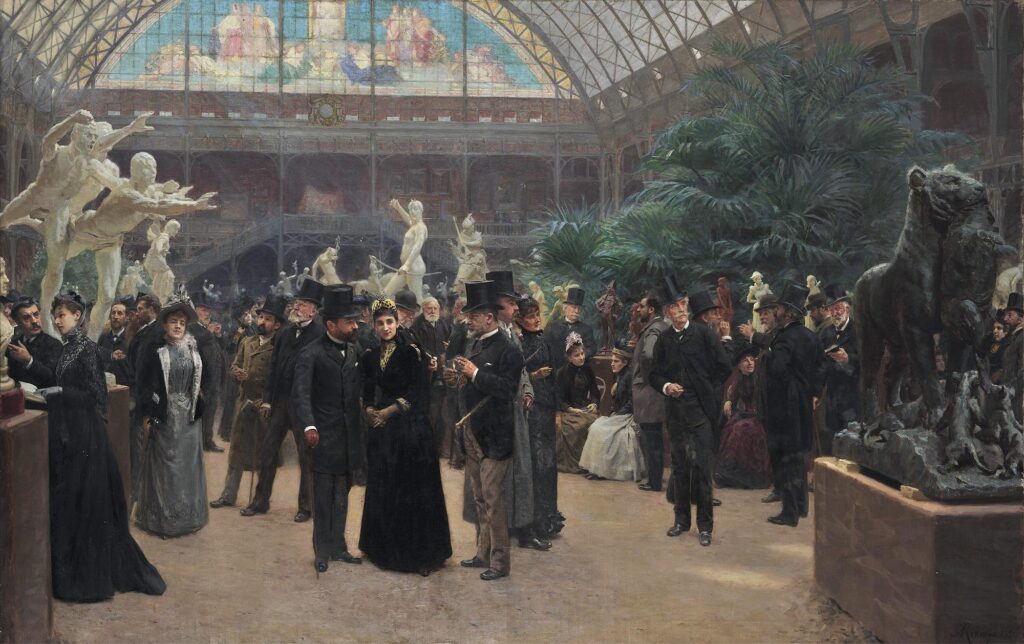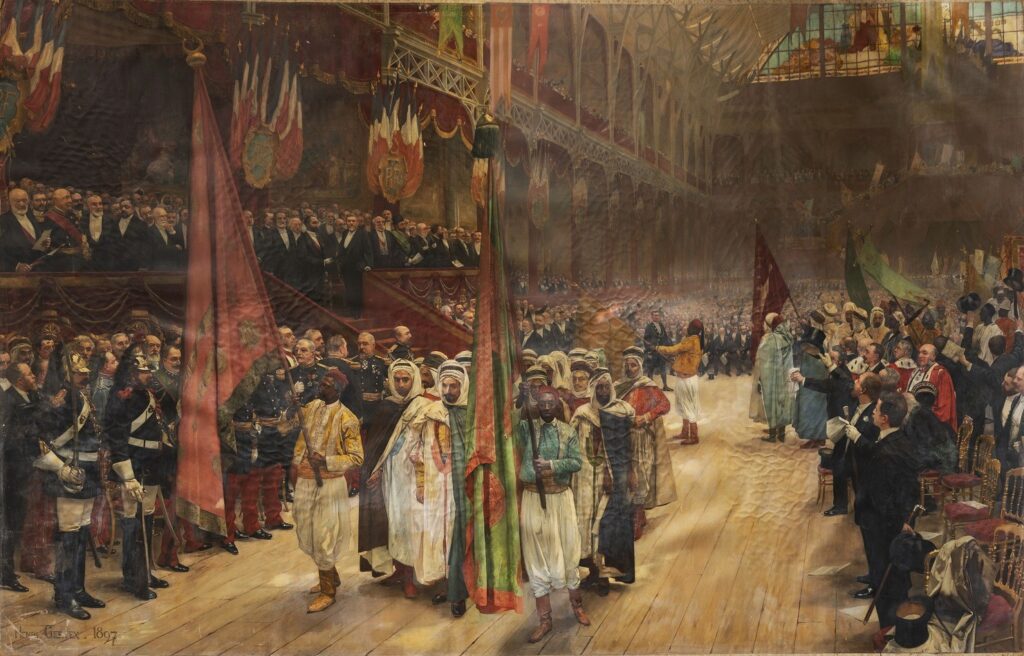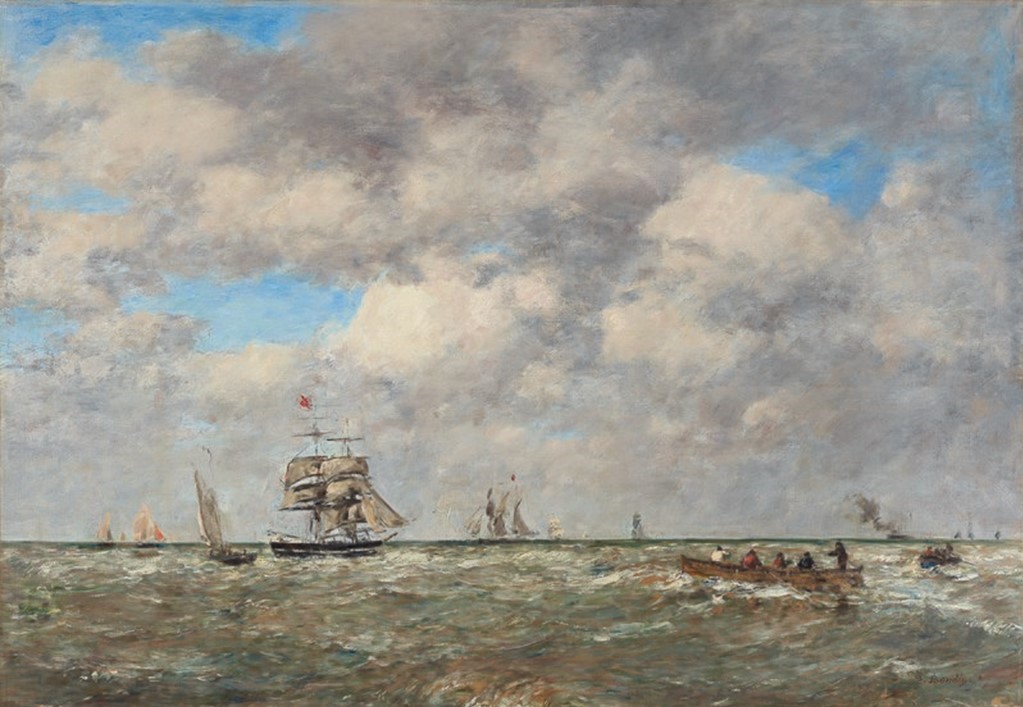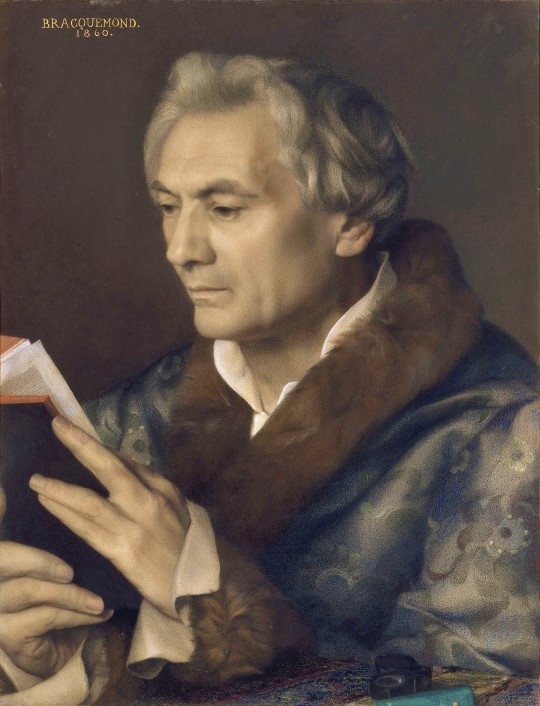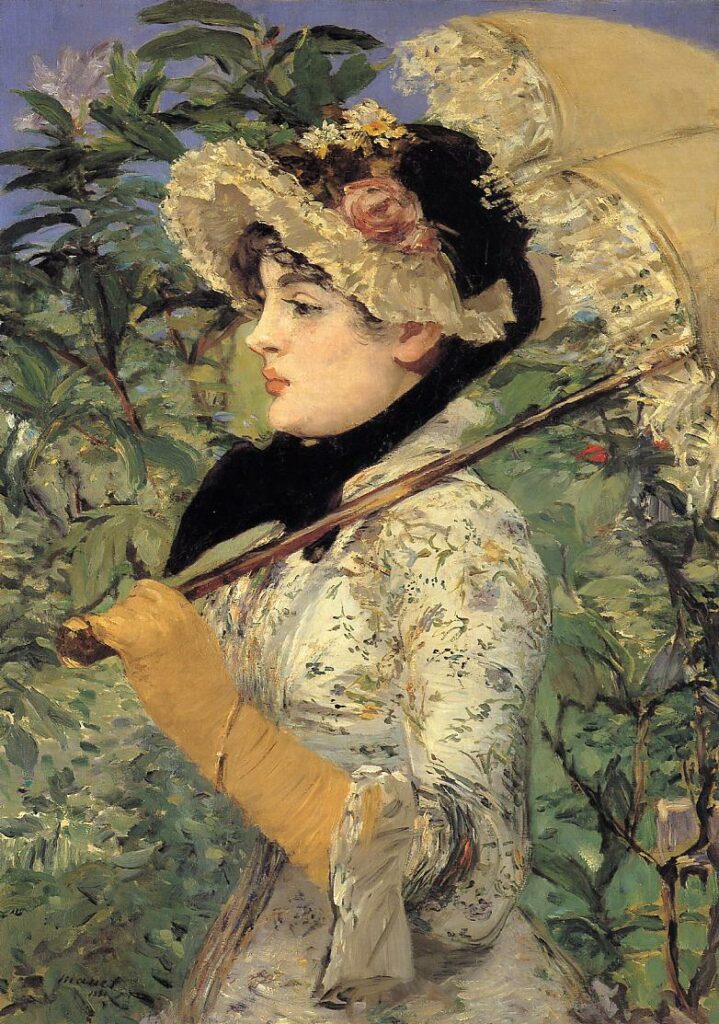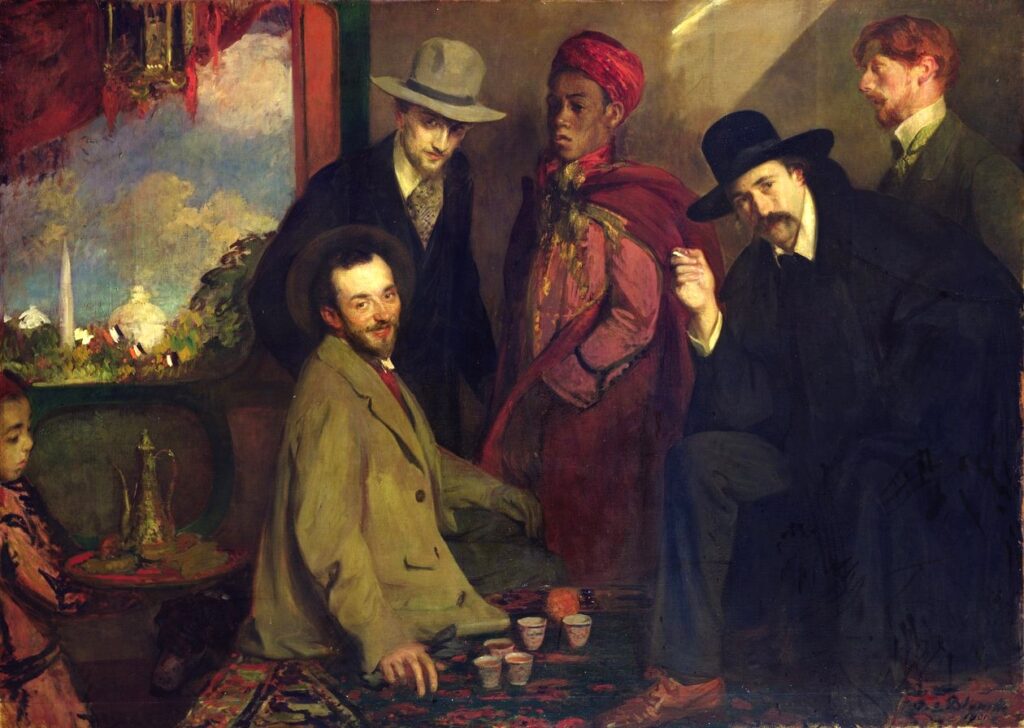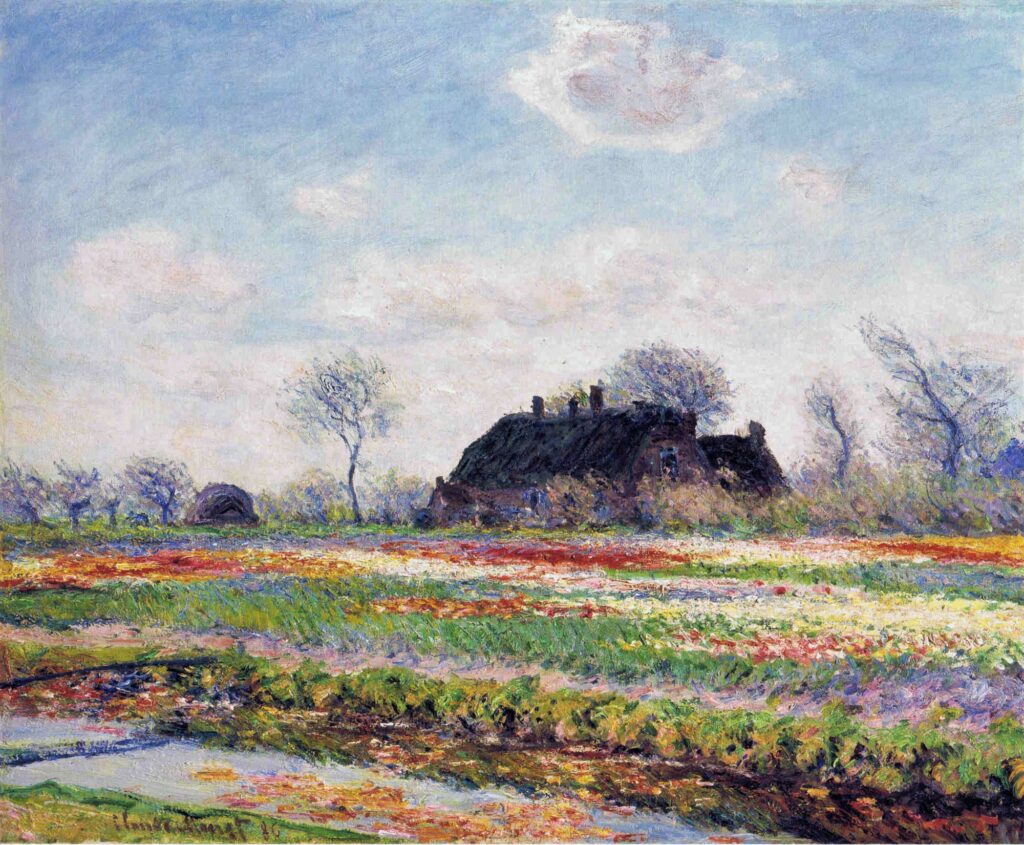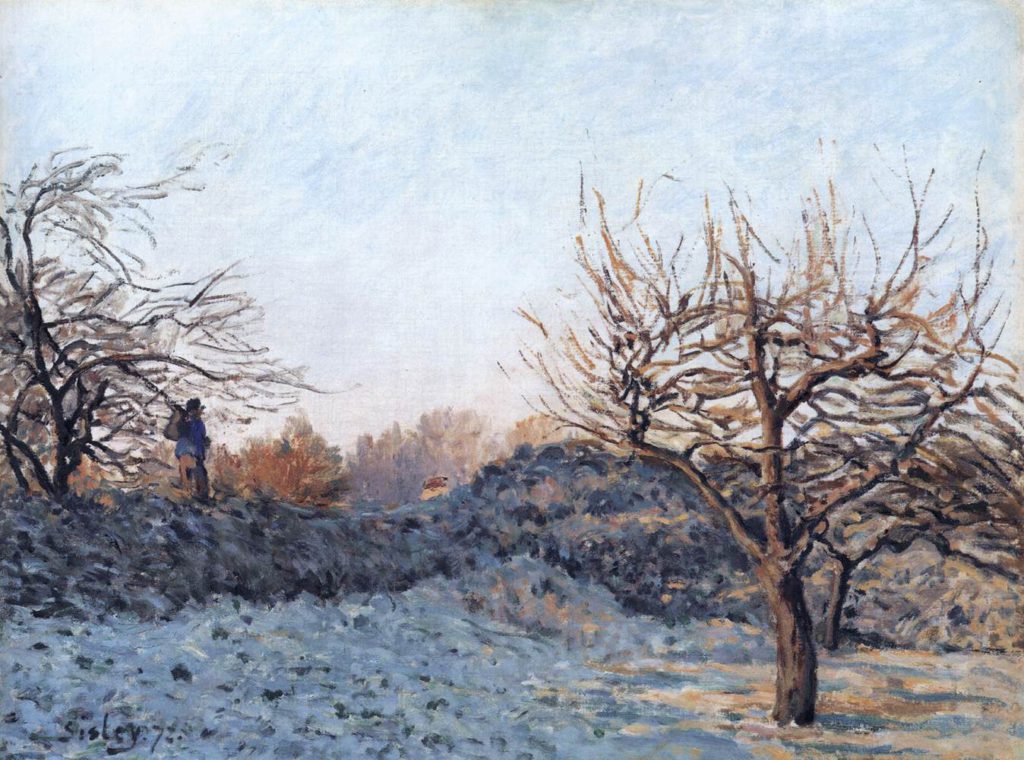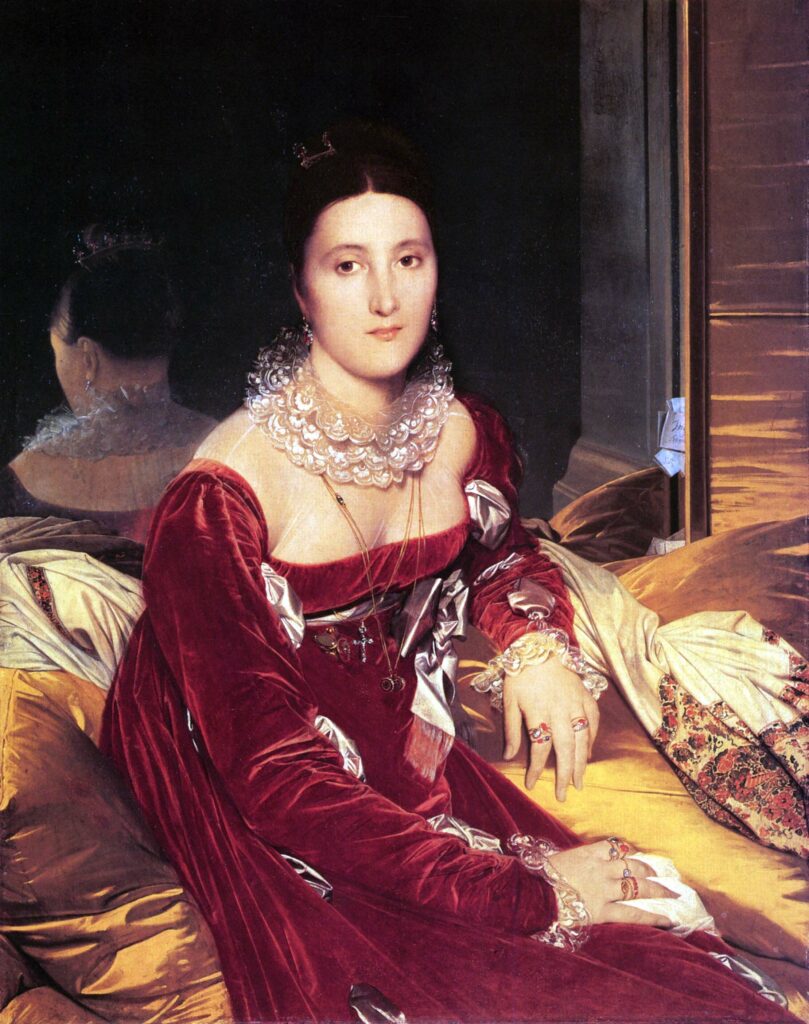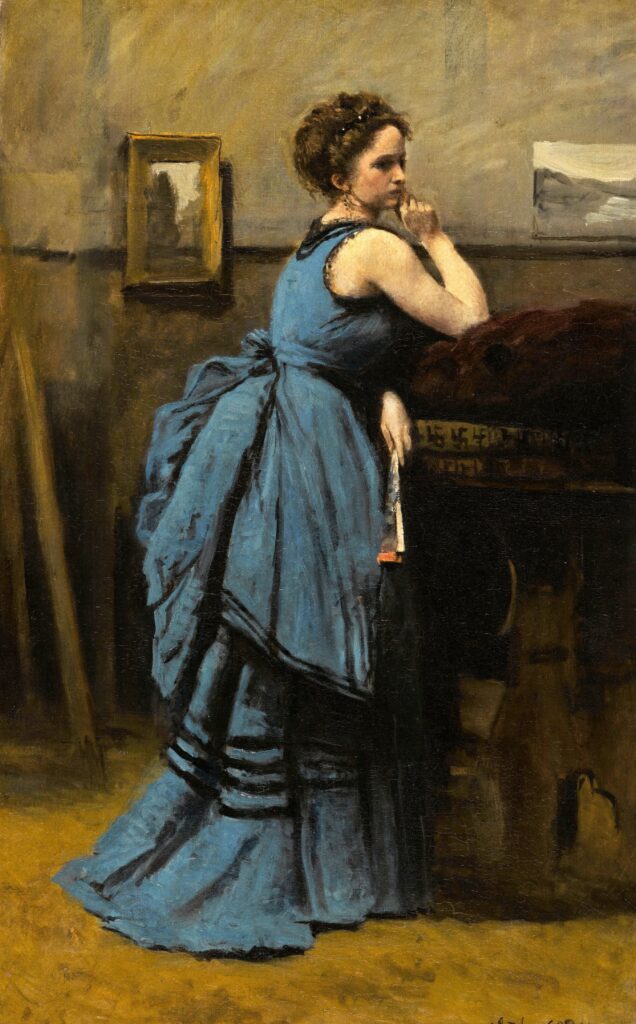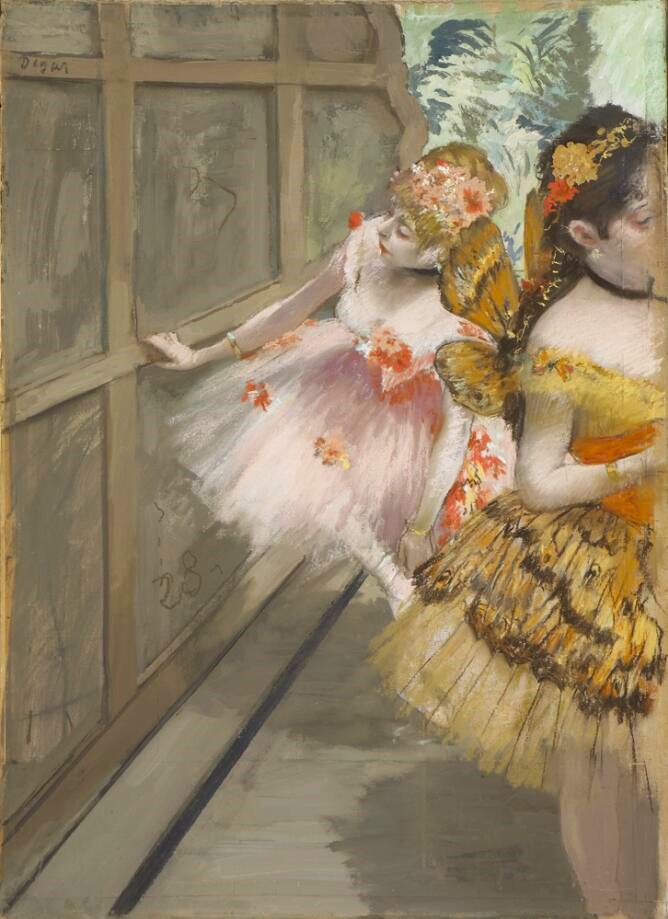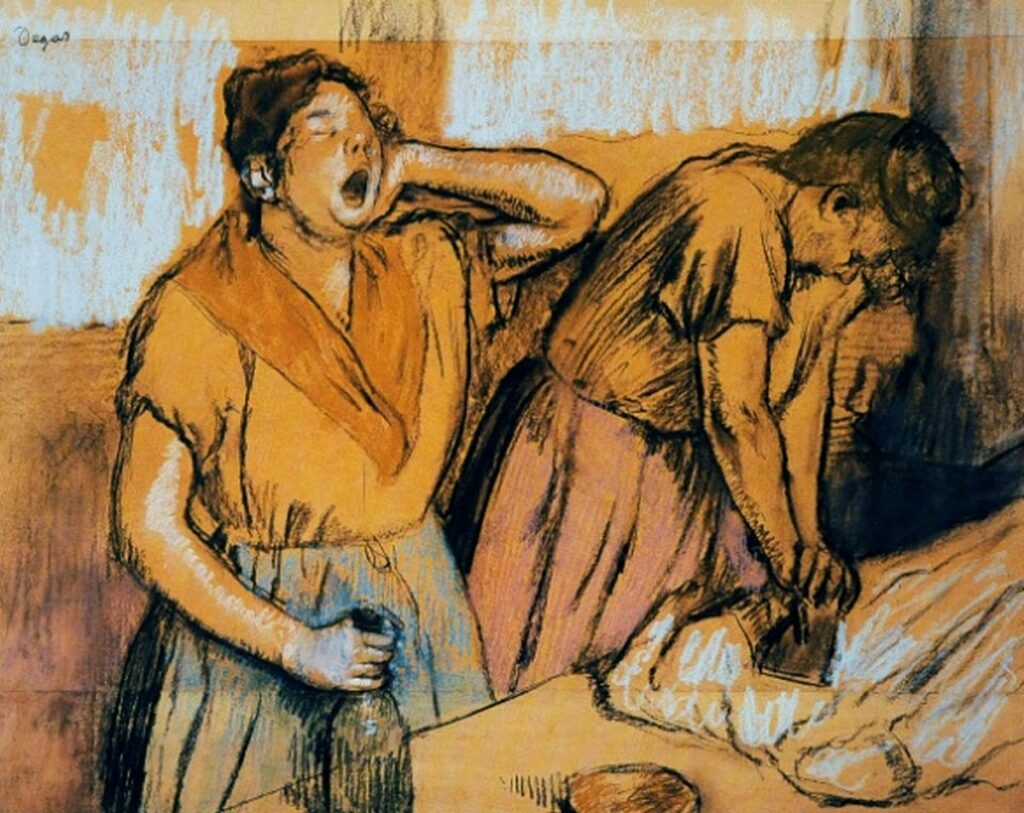Meta-Impressionism / Other exhibitions
Expositions Universelle
Paris 1855 – 1900
A universal recognition
Introduction:
The ‘Expositions Universelle’ held in Paris from 1855 till 1900 were part of international Universal expositions held in large cities in several countries, see seperate page. Here you will also find some general information on the Paris Expositions Universelle.
On this page the focus is on the exhibitions of Fine Arts held in Paris during these Expositions Universelle in 1855 +1867 +1878 +1889 +1900. The art-works were (mostly) divided in 5 ‘classes’: 1. oil paintings; 2. other paintings and drawings; 3. sculptures and engravings on medals; 4. architectural models and drawings; 5. engravings and lithography. The art that was exhibited can be seen as the standard in terms of art at that time. It was the art that the countries wanted to show the world as their best art*. For the artists it was a (posthumous) universal recognition.
Note*: there was some emphasize on art-works depicting national history and typical scenes from daily life (R322,p364).
A development in art:
In the presentation of French art at the Expositions Universelle in Paris, we can (provisionally) discern a development. In 1855 France especially presented Ingres, Delacroix, but also Decamps. In 1867 and 1878 the Neo-classicists and the Barbizon painters were about equally presented. But in 1889 and 1900 the Neo-Classicists are much less presented and mostly as portraitists. Corot was most amply presented in 1889. In 1889 the partakers of the ‘impressionist’ expositions started to be present and in 1900, at the Centennial exposition, they had a room of their own. Still, the Neo-Classicist Gérôme called it the ‘disgrace of France’.
Note: more info will follow.
Individual contra-expositions by Courbet and Manet:
Sources on Impressionism lay much emphasize on the individual independant exhibitions of Courbet in 1855 and 1867 and of Manet in 1867 (R3,p33). Rewald mentions that in 1855 ’the jury had refused two of his most important canvases’ (R1,p16), but doesn’t mention that 11 other works had been accepted and ended up in the catalogue (iR1). In 1867 four of Courbet his works were accepted and ended up in the catalogue (R231), still Denvir emphasizes that his Pavillon du Réalisme and the pavillon of Manet were mocked (R5,p43+45). Courbet and Manet are framed as being refused and mocked (like later the ‘impressionists’) and therefore organised their independant exhibitions. But the ‘impressionist’ expositions were independant group exhibitions. They were organised by artists that often had not much money to spend contrariwise to Courbet and Manet who had enough money to organize their own expensive individual exhibitions. These same sources hardly mention the partaking of the ‘impressionists’ in 1889 and 1900 at the Exposition Universelle. For 15 of them this recognition came just 3 years after the last ‘impressionist’ exposition in 1886.
1855 in Paris:
Part of the Exposition Universelle of 1855 was dedicated to the Fine Arts*. This was the first Exposition Universelle that did so (R1,p13;R116I,p106;R3,p704). It was held at a specially constructed Palais des Beaux-Arts at the avenue Montaigne from the 15th of May till the 15th of November (iR1;R116I,p106). There were 3 classes, 1 for painting and etching, 1 for sculpture and 1 for architecture.
There were 2140 (or 2175) participants, 1072 from France and 1103 from abroad (R231/1878,p86). There were 5120 works (catalogue numbers) exhibited. 2400 works were exhibited by artists from 27 foreign countries (The first French painting had number 2401; iR1;R1,p15).
In total there were 10 grand medals of honour awarded. This included the Belgian painter Hendrik Leys (1815-1869). The Swiss painter Alexandre Calame (1810-64) received a 1st class medal. In the English section the Pre-Raphaelites were present (R1,p15;R88).
Note*: It is unclear if the Salon of 1855 coincided with this exposition or that it was cancelled (R322,p362).
More than 2700 works were sent in by French artists (so probably not >3400 works; R116I,p106). In one room / gallery there was a large review of 68 works by Ingres (41 catalogue numbers; 1 catalogue number consisted of 25 drawings for stained-glass windows). Ingres had stopped exhibiting at the Salon, after being criticed in 1834 and was now present for the first time again (R1,p15;iR4;iR1;R88). A central hall was dominated by 35 works by Delacroix, who had chosen a series of paintings representing the various phases of his development (iR1;R88;R1,p15+16). So the most important representatives of Neo-Classicism and Romantism were highlighted. But they were not the only ones: Decamps (1803-60), exhibited 51 art-works, Gudin (1802-80) 25, Vernet (1789-1863) 22 and Lehmann (1814-82) 21. (iR1) Their styles varied largely.
The prices didn’t only went to Neo-Classicist painters as Rewald claims (R1,p16). Indeed Cabanel received a 1st class medal (exhibiting 5 paintings and also was appointed Chevalier de Légion d’honneur). Gérôme received a 2nd class medal (exhibiting 3 paintings) and also was appointed chevalier de la Légion d’honneur. But also the Barbizon painters received medals. Rousseau exhibited 13 works and received a 1st class medal. So did Troyon (exhibiting 9 works), Français, Huet and Corot (exhibiting 6 works). Daubigny received a 3rd class medal (exhibiting 4 works). Also Jules Breton received a 3rd class medal (exhibiting 3 works). (R231) Meissonier received a Grande Médaille d’honneur. Lehmann and Couture a 1st class medal. Rosa Bonheur and Isabey received a 1st class medal. Alfred Stevens also was awarded. (R177,p26;R1,p16)
Though 11 of his 13 entries were accepted, Courbet withdrew them all and showed these 13 + 40 other works in his ‘Pavillon du Réalisme’ at the Avenue d’Antin (R88;R1,p16;R116I,p106).
Pissarro who had just arrived in Paris, coming from the Danish West Indies, visited the Exposition Universelle and the Courbet exhibition.
See seperate pages with pictures and general info on this exposition.
Sources: (R116I,p106;R1,p13;R88;R3,p33).
More info: WikiPedia (iR3).
1867 in Paris:
At the Exposition Universelle in 1867 held in Paris there also was an exhibition of ‘oeuvres d’art’, showing at least 1043* art-works of French artists and many from other countries (R231/1867;R88). Boine claims that of the 3000 of the French works admitted 2000 were rejected (R287,p418). Rousseau was chairman of the jury (R290,p57+180).
Note*: this is much less than in 1855. In 1867 there was a seperate Salon, in 1855 there wasn’t.
Some ‘impressionists’ did exhibit: Brandon showed 2 paintings, Auguste Ottin 1 sculpture and Félix Bracquemond 1 etch. Some Neo-classicists received medals: Cabanel received a Grande medaille d’honneur (exhibiting 6 paintings). So did Gérôme, who was later appointed Officier de Légion d’honneur (he exhibited 13 paintings). Bonnat and J.E. Delaunay received a 2nd class medal and later was appointed Chevalier de Légion d’honneur. Bouguereau received a 3rd class medal (exhibiting 10 paintings).
Again also Barbizon painters received medals. Daubigny received a 1st class medal, so did Français, who also was appointed Officier de Légion d’honneur. Corot received a 2nd class medal (exhibiting 7 paintings) and later would be appointed Chevalier de Légion d’honneur. Chintreuil received a medal. Other price winners were: Jules Breton with a 1st class medal and later appointed Officier de Légion d’honneur. Meissonnier received a medal of honor and later was appointed Commandeur de Légion d’honneur. Feyen-Perrin received a medal. (R231)
Courbet, was excepted with 4 works who ended up in the catalogue, but again he withdrew them and opened his ‘Pavillon du Réalisme’ the 8th of April at the Place de l’Alma. Manet had not submit anything to the jury, but opened his own retrospective the 22th of May in a pavilion near the Pont de l’Alma opposite the Exposition Universelle. It consisted of about 50 art-works and wasn’t much successfull; the preface of the catalogue was written by Astruc (R5,p45;R88;R1,p171/2;R231). There was a memorial exhibition for Ingres, who died earlier that year, in the École des Beaux-Arts (R1,p170).
See seperate pages with pictures and general info on this exposition.
Sources:
More info and pictures: Wikipedia (iR3), WikiMedia (iR6).
1878 in Paris:
The Fine art section of the ‘Exposition Universelle International’ of 1878 held in Paris, consisted again of 5 classes like in 1867, namely in 1. Peintures à l’huile; 2. Peintures diverses et dessins; 3. Sculptures et gravures sur médailles; 4. Dessins et modèles d’architecture; 5. Gravure et lithographie. There were entries from 30 countries. The entries of the French artists were mentioned within 2071 catalogue numbers (R231/1878,p156; see catalogue). Dupré was ‘attaché au Commissariat des Expositions’.
Manet was rejected for the Fine art section (R211,p4). At the Italian section Giuseppe de Nittis exhibited 12 paintings. He would receive a 1st class medal and was appointed Chevalier de Légion d’honneur. Cabanel received a Grande médaille d’honneur, he had exhitibed 8 paintings, including 5 portraits. Other price winners were: Feyen-Perrin (1826-88) was appointed Chevalier de Légion d’honneur. Of the Barizon painters Corot exhibited 10 paintings, Daubigny 9. Millet, Rousseau and Troyon were absent. (R231) Some sources mention that Léon Ottin exhibited (two) stained glasses (aR19;aR18;iR4), but this is not affirmed by the version of the catalogue that I have (R231).
See seperate pages with pictures and general info on this exposition.
Sources:
More info and pictures: WikiPedia (iR3); WikiMedia (iR6); gallica (iR40).
There also was a special exhibition of ‘des portraits nationaux‘ with 961 ‘peintures, sculptures, tapisseries, miniatures, émaux, dessins, etc’ exhibited at the Trocadéro and organised by Henry Jouin. It depicted portraits from the 11th till the 19th century of statesmen, military people and also of artists. Works were exhibited of David, Delacroix, Ingres, Isabey and many others. None of the the partakers of the ‘impressionist’ expositions, nor of the more closely related artists were exhibited. So, I leave it outside the scope of this website. (see catalogue; iR40).
1889 in Paris:
In 1889 at the ‘Exposition Universelle Internationale’ held in Paris, there was an international exposition of living artists called ‘oeuvres d’art’. Alongside, there also were two national French exhibitions, a retrospective and a centennial exposition.
The international oeuvres d’art:
The international ‘oeuvres d’art‘ with at least 2777 art-works from living French artists and many art-works of artists from other countries (see catalogue). In the jury there also were landscape painters such as Breton, Cabat, Cazin, Français and Harpignies. No one exhibited more than 10 paintings. Naturalism and nationalism were central themes, represented in traditional rural customs and historical paintings (R322,p459).
Several ‘impressionists’ also were present: Astruc exhibited 1 watercolour and 2 sculptures and received an honourable mention. Boudin exhibited 2 paintings, Colin 2, Franc Lamy 2 (he received a honourable mention), Lépine 2 (received a golden medal), J.F. Raffaëlli exhibited 8 paintings, 5 drawings and 2 pastels. Auguste Ottin exhibited 1 sculpture. Félix Bracquemond exhibited 13 etchings and Desboutin 1 (a selfportrait). In the Italian section Zandomeneghi exhibited 5 paintings and 3 pastels, all untitled; he received an honorable mention (R88I,p157;R204,p398).
There also were 2 exhibitions just for French artists (or those living in France). There was a retrospective of French art untill the 19th century, the ‘Exposition Retrospective de L’art Français’ held at the Trocadéro (see catalogue R231/1889=iR40).
Centennial exhibition:
More known is the ‘Exposition Centennale de l’Art Français 1789-1889′ held from the 6th of May till the 6th of Decembre (or Octobre) in the Palais des Beaux-Arts at the Champs-de-Mars (also ‘Palais du Champ de Mars) (see catalogue R231/1889=iR40). Centennale or ‘Centenaire’ because the French revolution had been 100 years ago.
Antonin Proust was the chief commissioner, assisted by Roger Marx, Georges Petit and others. For the engraving section Félix Bracquemond and Beraldi were part of the jury (R88;R231;R85XIII,p1). There were at least 652 paintings exhibited and many other art-works. The art-works were divided within 7 groups: 1. Peinture; 2. Dessins et aquarelles; 3. Miniatures et éventails; 4. Sculpture; 5. Gravure en médailles; 6. Architecture; 7. Gravure et lithographie.
There were more works exhibited of the Barbizon painters than of the Neo-Classisists. Corot was best present with 44 paintings and 8 other works. Millet with 13 paintings and 31 other works. Ingres with just 7 paintings and 28 drawings. David with just 9 paintings and 5 drawings. Delacroix with 21 paintings and 17 other works. There were 25 paintings and 2 drawings present of Bastien Lepage (1848-84). And of Courbet 12 paintings and 2 drawings. And of Manet 14 paintings and 4 other works.
Several ‘impressionists’ also were present at the Centennale: Boudin exhibited 3 paintings and received a gold medal (R161,p92), Cézanne exhibited 1 work (R48,p13+no136;R34,p498), Colin 3, Monet 3 (R22,CR401+526+539) and Pissarro exhibited 2 not identified works (‘soleil d’hiver’ and ‘La Route’; R116). Félix Bracquemond exhibited 2 pastels and 6 engravings and later would be appointed Officier de Légion d’honneur (R52,p229;R231). Desboutin exhibited 1 painting and 1 etch, both portraits. J.F. Raffaëlli exhibited 5 paintings and 1 watercolour and received a gold medal. Legros exhibited 2 etchings. Of Cals 2 paintings were exhibited.
Durand-Ruel had sent 55 paintings; 4 by Sisley were rejected. (R166,p46+53,note90)
Degas and Renoir refused to join; Renoir wrote ‘everything I have done is bad’ (R31,p304;R88). The Pont-Aven group held in June an independent exhibition of a Group Impressionists and Synthetists in Café Volpini, near the Exposition Universelle’ (R3,p704;R88;R5,p169). Gauguin exhibited 15 paintings, 1 pastel and 1 watercolour (R36,p81;R49,p92). Schuffenecker exhibited 20 works (R54,p227). They did sell not one work (R88).
See seperate pages with pictures and general info on this exposition.
Sources:
More info: WikiPedia (iR3); WikiMedia (iR6).
1900 in Paris:
There were all kinds of expositions at the ‘Exposition Universelle’ held in Paris in 1900 divided in 18 groups. Each group was divided within several classes (121 in total). The ‘Oeuvres d’art’ (group II) was divided in 4 classes: 7. Peintures – Cartons – Dessins; 8. Gravure et lithographie; 9. Sculpture et gravure en médailles et sur pierres fines; 10. Architecture.
This ‘Exposition décennale‘, also included international artists (from 28 countries) and presented art-works made between 1889 and 1900. They showed the best of their recent works. Each country was responsible for their own selection. They chose the works that were most qualified ’to be shown to the admiring eye of the whole world’ (R472,p62). This resulted in a variaty of entrences. The British committee for example selected namely traditional works, the Belgium committee included artists involved with the avant-garde exhibitions of Les XX and La Libre Esthetique. The French committee excluded most Impressionists, Post-Impressionists and Symbolists, except for those who applied a more conservative style (R322,p519;R472,p62). The result was a variaty of art, where different influences can be discerned, Neo-Classicism, Romanticism, Realism, Naturalism, Impressionism and even Symbolism.
The exhibition opened the 2nd of May (R472,p57). The hanging was done by Guillaume Dubufe and Albert-Pierre Dawant, who were influential in respectively the Société des Artistes Français and the Société Nationale des Beaux-Arts. This decennial exposition was held in the Grand Palais at the Champs-Élysées. (In the western wing the Centennial exposition was held↓.) Each country had their own rooms.
Reviews remarked an atmosphere of competition and a tendency to commercialisation. Several entries had a sense of Nationalism in depicting local traditions and custumes, national myths and scenes from contemporary life (R472,p63/64). Many foreign partakers had followed art-education in Paris at the École des Beaux-Arts and in the many art-workshops (R472,p67+68).
Sources: the exhibition catalogues; Maryanne Stevens (2000, in R472,p55-71).
There were also 2 national French exhibitions of art alongside the Exposition Universelle.
‘L’Exposition retrospective d’art Français‘. With all kinds of sculptures and applied French art made from the Middle Ages to 1800. It was held in the Petit Palais at the Avenue Nicolas II. (archive.org.us//ia801304).
More known is the ‘Centennale de l’Art Français 1800 à 1889′ held from the 15th of April till the 12th of November. Commissioners were Paul Gallimard and Roger Marx and Durand-Ruel was involved (R88). Many of the works came from private collections, notably of Henri Rouart. In comparison with other works there were less from the French musea, earlier awards at the Salon were not mentioned. The Impressionists, excluded from the Decennial exhibition, were well represented and had their own room (R472,p62+71,note29;R88;R231). Gérôme called it ’the disgrace of France’ (R88II,p257).
Note: It is interesting to see, that some works were exhibited at several Universal Expositions, like the Wave of Courbet. A sign of appreciation throughout the years. An alternative way to look at art-history, maybe better than the ‘journalistic’ way of art-history that focusses on scandals.
At the Centennial exposition, there were one or two rooms especially for the ‘impressionists’. In total 28 of the 57 partakers of the ‘impressionist’ expositions showed 73 paintings (>10%!) and 39 other art-works. Renoir first refused to exhibit (R31,p308). Astruc received a 3rd class medal (iR5;iR35). Félix Bracquemond received a Grande Prix de Gravure (R3,p650;R16,p81;R88;R52,p229). Desboutin received a large price (R3;R9). Franc Lamy received a 3rd class medal. Vidal received a bronze medal (R88;iR69;R3;R9;iR60;aR2).
The Neo-Classicists less represented, than in former years*: Gérôme was present with just 1 paintings and 2 sculptures. Cabanel with just one painting and Bouguereau with 4. There were 17 paintings by Ingres, of which 10 were portraits and 10 by David of which 7 were portraits. So, the gotfathers of Neo-Classicism are more represented as portraitists. Works of the Romantici were also present: Delacroix was present with 16 paintings, Géricault with 5. The Barbizon painters were more well represented: Cabat with 2; Chintreuil with 5; Corot with 24; Daubigny with 15; Diaz with 8; Dupré with 10; Français with 2; Huet with 2; Jacque with 2; Millet with 6; Rousseau with 9; Troyon with 5.
Note*: Still Mellerio mentions that the jury consisted of namely academic artists (R380,p17)
See seperate page with pictures and general info on this exposition.
Sources:
More info and pictures: WikiPedia (iR3); WikiMedia (iR6). See gallica (iR40) for several data. A photo album called ‘Le Panorama’ gives a good impression (iR19).
Sources:
My main sources the catalogues mentioned here below, the catalogues Raisonné of Monet (by Wildenstein, 1996=R22IV,p1017/8), Signac (by Cachin, 2000=R106), Pissarro (by Pissarro & Durand-Ruel, 2005=R116I,p363-6). Other main sources are Rosenblum/Stevens/Dumas (2000=R472), Monneret (1878-81=R88II,p253-258), Walther (2013=R3,p704), Denvir (1993=R5,p42/3+168), Rewald (1973=R1), WikiPedia (iR3).
Catalogues:
1855, Paris. Exposition Universelle = Salon (iR1/Salon, Paris avant 1880).
1855, Paris. Exposition Universelle de 1855; explication des ouvrages (dn790005.ca.archive.org =iR19=R231-9) (with exhibited art-works of foreign countries and France)
1855, Paris. Les Beaux-Arts à l’Exposition Universelle de 1855 (considerations about the exhibited art-works) (gallica.bnf.fr/6528209v =iR40)
1855, Paris. Catalogue Officiel Exposition Universelle 1855 (complete catalogue of all objects presented, excluding the works of art) (gallica.bnf.fr/bpt6k97652895 =iR40; dn790004.ca.archive.org =iR19)
1867, Paris. Catalogue d’oeuvres d’art (link archive.org/ia600806; =iR19/R231-8)
1878, Paris. Jules Simon: Rapports du Jury International (link archive.org/ia800107/ark:/13960/t1bk80k15; =iR19/R231)
1878, Paris. Catalogue officiel Tome I ‘oeuvres d’art‘ (link gallica.bnf.fr/bpt6k90423k; =iR40/R231-7)
1878, Paris: Louis Gonse (ed.): ‘Les Beaux-Arts et les arts décoratifs; Exposition Universelle de 1878’ (iR40,bpt6k98215077).
1889, Paris. Catalogue exposition Decennale ‘oeuvres d’art‘ (link gallica.bnf.fr/bpt6k12657842; =iR40/R231-6)
1889, Paris. Exposition Centennale de l’art Français 1789 – 1889 (link gallica.bnf.fr/bpt6k1265784z; = iR40/R231-5)
1889, Paris. (link to several catalogues on gallica.bnf.fr; iR40)
1889, Paris, Exposition Retrospective de L’art Français au Trocadéro (link to catalogue on gallica.bnf.fr//btv1b116000139. (iR40/R231)
Beaux-Arts et les arts décoratifs; L’art français rétrospectif (1789-1889) au Trocadéro; Exposition Universelle de 1889, edited by Louis Gonse et Alfred de Lostalot. Paris, 1890. (iR40,bpt6k3115558).
1900, Paris. Catalogue général officiel; oeuvres d’art (All 3066 catalogue numbers of the Centennale expo). (iR19//ia601309; =R231-1)
1900, Paris. Catalogues illustré Exposition Centennale (link to gallica.bnf.fr/bpt6k432833q; and gallica.bnf.fr/bpt6k62110164=iR40=R231-2).
1900, Paris. Catalogue Génénéral Officiel, tome second groupe II , Oeuvres d’Art, classe 7 à 10; Exposition Décennale des Beaux-arts 1889-1900 (Musée Rodin). (=R231-3)
1900, Paris. Catalogues illustré Exposition Decennale 1889 à 1900 (iR40,bpt6k4328343 ; iR19/ia801209 =R231-4)
Paris, 1900. Catalogue officiel illustré de l’exposition rétrospective de l’art français des origines à 1800 (iR19//ia801304 = R231-16)
1900, Paris. Walton, Saglio & Champier: Chefs d’oeuvre of the Exposition Universelle 1900 (note: only English and American art (link to archive.org/ia800304; =iR19/R231; note: only paintings;)
1900, Paris. Exposition Universelle de 1900; Les beaux-arts et les arts décoratifs (https://dn790009.ca.archive.org/ =iR19=R482)
1900, Paris. Comte, Jules (ed.): L’Art à l’Exposition universelle de 1900. (https://ia800401.us.archive.org/ =iR19=R481)
1900, Paris. Encyclopédie du siècle. L’exposition de Paris de 1900 (Issued in weekly, later semiweekly, numbers) (https://ia903105.us.archive.org/ =iR19)
1900, Paris. Le Panorama; René Baschet (iR40,btv1b53023926s =R231)
1900, Paris. Recueil. (iR40,btv1b84328824 = R231)
1900, Paris. Album photographique Paris Exposition 1900 (https://ia600800.us.archive.org/ =iR19)
1900, Paris. Plan de l’Exposition Universelle (iR40,btv1b84422593 = R231)
1900, Paris. Mellerio, André, L’Exposition de 1900 et l’Impressionnisme (https://dn720502.ca.archive.org/ =iR19=R380).
1900, Paris: Roger Marx: ‘La décoration et les industries d’art; à l’Exposition Universelle de 1900’ (iR40,bpt6k9685271s).
1907, Paris: Démy, Adolphe: Essai historique sur les expositions universelles de Paris. (online: gallica.bnf.fr/bpt6k5497478z = iR40=R389)
Additional references:
- Mellerio, André: L’Exposition de 1900 et l’Impressionnisme. Paris, 1900. (see link to online PDF ia.800607.us.archive.org; =iR19 = R380)
- Article by Marc Maison on the 1855 exposition, see.
- Novel: Visite À L’exposition Universelle De Paris en 1855 (822p) (iR132)
- Photo album on art expostion of the Exposition Universelle of 1855 (iR40,btv1b525506909v)
- CNUM.CNAM.fr on the Expositions Universelles; links to several catalogues and reports (iR488)
- CNUM.CNAM.fr//introduction generale on the Exposition Universelle of 1900 (iR488)
part 2: Léonce Bénite: Beaux Arts (essay on French art-developments in the 19th century) (iR488,p123-574=R480) - x
Recommanded citation: “Meta-Impressionism / other exhibitions: Expositions Universelle; a universal recognition. Last modified 2025/08/27. https://www.impressionism.nl/expositions-universelle/”
Note: additional info and pictures will be added.


